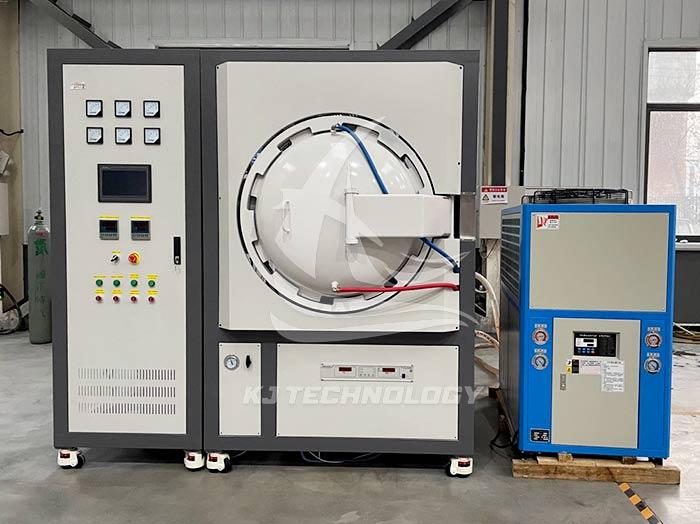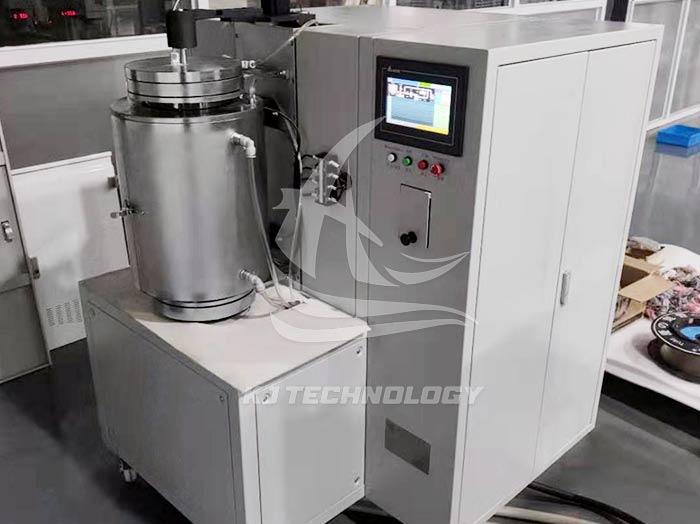Advantages of vacuum gas quenching furnace
 11-10-2025 Author: KJ technology
11-10-2025 Author: KJ technology
The vacuum gas quenching furnace, with its unique working principle and technical characteristics, has demonstrated significant advantages in the field of heat treatment, especially suitable for scenarios with strict requirements for material properties, surface quality, and environmental protection. The following is a detailed analysis of its core advantages:
1. Significant improvement in material properties
No oxidation decarburization, maintaining the intrinsic properties of the material
Principle: The vacuum environment (pressure ≤ 10 ⁻¹ Pa) completely isolates oxygen, preventing the surface of the workpiece from reacting with oxygen, and preventing the formation of oxide scale and loss of carbon elements.
Effect: The surface smoothness of the workpiece reaches Ra<0.8 μ m, without the need for subsequent sandblasting or polishing treatment, while maintaining the original composition and mechanical properties of the material. For example, after vacuum gas quenching, the surface hardness uniformity of mold steel is improved and the fatigue life is extended.
Uniform cooling, reducing thermal stress and tissue stress
Principle: High pressure gas (10-20 bar) forms strong turbulence through a nozzle array, with a cooling rate of 50-100 ° C/s, and the cooling rate difference between different parts of the workpiece is less than 5%.
Effect: Compared with oil quenching, gas quenching reduces the deformation of workpieces, reduces residual stress, and significantly improves dimensional stability and machining accuracy. For example, after gas quenching, the flatness error of aviation titanium alloy parts decreases from 0.2mm to 0.05mm.
Accurate temperature control to achieve uniform organization
Principle: PID or multi-stage program temperature control system combined with thermal radiation heating ensures temperature uniformity within ± 5 ° C, ensuring consistent material phase transition process.
Effect: After gas quenching, materials such as high alloy steel and high-speed steel have a fine and uniform martensitic structure, with a hardness distribution fluctuation of<1HRC, and their comprehensive mechanical properties are superior to traditional quenching processes.
2. Outstanding advantages in environmental protection and safety
Zero pollution emissions, in line with green manufacturing requirements
Principle: Replace quenching oil with high-purity inert gases (nitrogen, argon), without the production of oil fumes, oil vapor, or harmful gases.
Effect: Completely eliminate the risk of fire and occupational health hazards (such as oil mist inhalation), while avoiding the cost of waste oil treatment, and saving environmental protection costs annually for a single device.
Gas recycling to reduce operating costs
Principle: The quenching gas is circulated after being cooled by a heat exchanger, with a consumption only 1/10 of that of oil quenching.
3. High process flexibility and automation level
Multi process integration to adapt to complex requirements
Function: Supports various processes such as quenching, tempering, annealing, brazing, sintering, etc., and automatically switches process parameters through programming.
Case: A certain automotive parts enterprise uses a vacuum gas quenching furnace to achieve continuous production of "heating gas quenching tempering", shortening the cycle from 48 hours to 12 hours and improving equipment utilization.
Adjustable cooling speed to meet diverse material requirements
Principle: By adjusting the gas type (nitrogen/helium), pressure (5-20bar), and fan flow rate (10-30m/s), the cooling rate covers 10-200 ° C/s.
Effect: It can handle a wide range of materials from low carbon steel to high-temperature alloys. For example, high manganese steel uses low-speed gas quenching (20 ° C/s) to avoid cracking, while high-speed steel uses high-speed gas quenching (100 ° C/s) to obtain fine carbides.
Automated control to reduce human error
System: Equipped with PLC or DCS control system, real-time monitoring of temperature, pressure, gas flow and other parameters, automatic adjustment of process curve.
Effect: The process repeatability reaches ± 2%, and the product qualification rate is improved from traditional processes, especially suitable for high-precision fields such as aviation and medical.
4. Significant economic viability and long-term returns
Reduce overall costs
Direct cost: eliminates the cost of quenching oil procurement, waste oil treatment, and workpiece cleaning, and reduces the cost of single piece processing.
Indirect costs: Reduce the scrap rate caused by oxidation and deformation, saving over one million yuan in quality losses annually.
Extend equipment lifespan and reduce downtime maintenance
Structural advantages: Vacuum environment reduces oxidation of heating elements, extending their lifespan to over 12000 hours (compared to oil quenching furnace heating elements with a lifespan of only 6000 hours).
Simplified maintenance: No oil accumulation, reduced electrical system failure rate, and reduced annual maintenance time from 200 hours to 80 hours.








